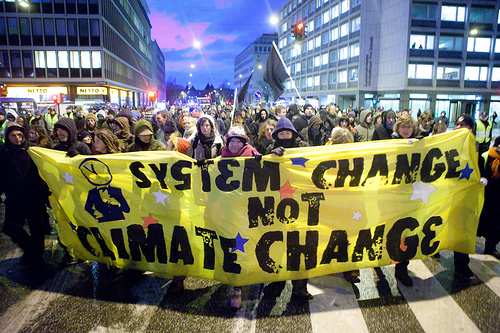KEY CONCEPT
A new study shows that the more pressure consumers, shareholders, regulators and other stakeholders apply to companies to reduce greenhouse gas emissions, the more companies integrate environmental considerations into their strategic planning, which leads to significant, positive results.
IDEA SUMMARY
GHG-intensive firms in the energy and industrial sectors are the source of the greenhouse gas (GHG) emissions recognized as the major cause of climate change. Not surprisingly, these firms are under pressure, notably from stakeholders and regulatory agencies, to reduce GHG emissions. Does this pressure have an impact on the environmental-friendly efforts and strategies of companies?
A new study based on survey results from companies in seven European countries demonstrates that the intensity of market pressure can make a significant difference. The pressure can come from a variety of sources including: environmentally conscious customers who might move to a competitor that offers green products, environmentally sensitive suppliers who elect to cease supplies, and environmentally active shareholders or investors who withdraw their stakes in the companies. Even competitors who put pressure on their opponents by offering green products can have an impact. In addition to market actors, regulatory agencies play a major role in putting pressure on polluting companies, especially given their capability to coerce a company to take action.
Perhaps the most interesting result from the research is not that pressure forces action, but that the scope of corporate environmental action aligns with how much pressure is applied. If the pressure is minimal, companies resort to ”greenwashing,” actions that are more about image than a substantive strategic change or focus on the environment. If the pressure is of medium strength, then companies might attempt to look for ways to make existing technologies and processes more environmentally friendly, through the increased use of recycled materials, for example.
Intense market pressure, however, will lead companies to incorporate environmental considerations into every top-level strategic decision, including decisions on new product development, R&D investments, technology development (seeking the best available technology to cut emissions) and the design of processes. These strategic decisions, the study shows, lead to significant results in terms of reducing GHGs and other negative impacts on the environment.
The researchers also studied whether the uncertainty of regulatory changes — that is, companies not knowing the timing or extent of new environmental regulations — would cause companies to 'wait and see’ before making significant improvements. They were surprised to find that companies are pre-emptively taking action to reduce their negative impact on the environment, even before regulations are announced.
BUSINESS APPLICATION
The market is paying attention to the environmental strategies of companies and those companies are taking notice. However, many companies, according to this study, seem to align their efforts to the level of pressure from outside market actors and regulators, which may be a short-term approach: The more market actors become aware of the growing climate change crisis and better understand their power to influence positive change, the more they will apply that power. In addition, companies with an environmental strategy focus — who incorporate environmental considerations in all strategic decisions — have found multiple benefits from their efforts, not only in being a better corporate citizen or improving the image of their brand, but also through greater cost-efficiencies and innovation in their processes and activities. For all companies, internal motivations can also play a significant role in driving their environmental-friendly strategies.
FURTHER READING
Simon Cadezs profile at University of Ljubljana Albert Czernys profile at RWTH Aachen University Peter Letmathes profile at RWTH Aachen University
REFERENCES
Stakeholder pressures and corporate climate change mitigation strategies. Simon Cadez, Albert Czerny & Peter Letmathe. Business Strategy and the Environment (January 2019).











